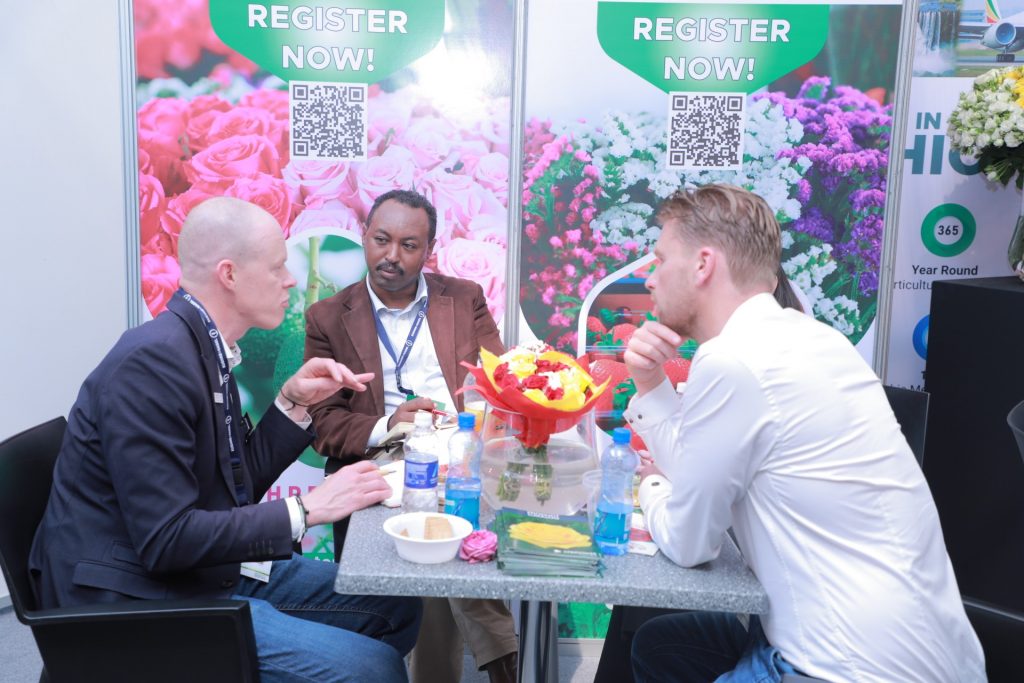

Ethiopia’s horticulture sector has risen rapidly over the past two decades, positioning the country among the world’s top five players in flower production and exports. According to Tewodros Zewdie, Executive Director of the Ethiopian Horticulture Producer Exporters Association (EHPEA), the industry’s growth has been exponential, playing a pivotal role in generating foreign exchange, creating thousands of jobs and addressing several economic challenges.
“We claim to say that the industry merges from grass to grace because in the last two decades, the growth has been quite exponential in Ethiopia,” Tewodros remarked, emphasizing how the sector has reshaped livelihoods and opportunities across the country.
A Critical Economic Contributor
For years, floriculture stood as Ethiopia’s second largest foreign exchange earner after coffee. However, with recent developments, gold exports have edged into second place, signaling dynamic shifts in the country’s export priorities. Despite this, horticulture — spanning cut flowers, summer flowers, cuttings, fruits, vegetables and herbs — remains a crucial pillar of Ethiopia’s economy.
Tewodros underscored the importance of the industry’s trickle-down benefits. “The trickle-down effects of the industry are also creating livelihoods for thousands of Ethiopians in addition to the direct deployment opportunities,” he stated.
Learning from Kenya and Facing Shared Challenges
As fellow horticulture powerhouses, Ethiopia and Kenya have maintained a collaborative relationship. Europe remains the primary export destination for both countries, with both industries facing common challenges, particularly in meeting evolving market requirements.
One notable example is the ongoing issue of false codling moth, now listed as a quarantine pest of concern by the European Union. “This has been a challenge for both Ethiopia and Kenya,” He explained. “We have been cooperating by cross-fertilizing knowledge and experience.” Ethiopia’s engagement with Kenya since 2018 has been instrumental in navigating phytosanitary regulations and aligning strategies in dialogue with European authorities.

Private and Public Partnership Key to Growth
The sector’s progress has also been fueled by close cooperation between the private sector and government. Policy formulation, amendment of existing regulations and a concerted push to improve the ease of doing business have yielded positive results.
“It doesn’t mean that everything is in a bed of red roses,” Tewodros admitted, acknowledging the persistent challenges facing the sector, ranging from phytosanitary issues to taxation. Nonetheless, the partnership approach has laid the groundwork for a competitive investment environment.
Ethiopia boasts some of the most favorable production costs in the region. “Ethiopia is one of the cheapest countries as far as the tariff of electricity is concerned,” he noted. “Airflights, we have competitive rates from Ethiopian Airlines as well.” Additionally, input costs for horticultural exporters are minimized, with no tariffs or duties applied to production materials.
Expansion, Sustainability and New Markets
Existing floriculture companies in Ethiopia continue to pursue expansion, supported by ongoing discussions with government authorities over land tenure arrangements. While a few new investors have entered the flower sector, significant investment is currently directed toward the fruit and vegetable segments.
Sustainability, however, remains the defining priority for the industry’s future. “Embracing sustainability is not a matter of choice; rather, it’s a question of necessity,” He stressed. Climate change, carbon footprint concerns and new environmental regulations, particularly in Europe, are driving the industry to rethink its practices.
Sea freight logistics have also become a strategic focus as global transport costs fluctuate and environmental pressures mount. At the same time, market diversification efforts are underway, with increasing attention to the United States, China, African markets and the Middle East.
“Pre-COVID, it was going well, but after COVID there was some slowdown,” He said of Ethiopia’s trade with China. “Now we are working closely with our counterparts in the China market.”
A Vision for East Africa’s Horticultural Future
Tewodros sees horticulture as a powerful tool for poverty alleviation and rural development in East Africa. He called for a concerted regional effort to prioritize value addition, particularly in the cut flower and fresh produce sectors.
“The biggest value of the sales lies in the value additions,” he remarked. “Our farmers need to focus on value additions in addition to exporting the raw products.”
He further urged public institutions, private investors and civil society organizations to work in unity toward building a resilient, sustainable and inclusive horticulture industry. “If you look at countries that are good in horticulture, farmers are economically quite good,” he concluded. “Their livelihood is in a better shape.”
The future of East Africa’s horticulture sector, with its potential to transform economies and uplift communities, appears promising, provided it embraces sustainability, innovation and regional cooperation.

